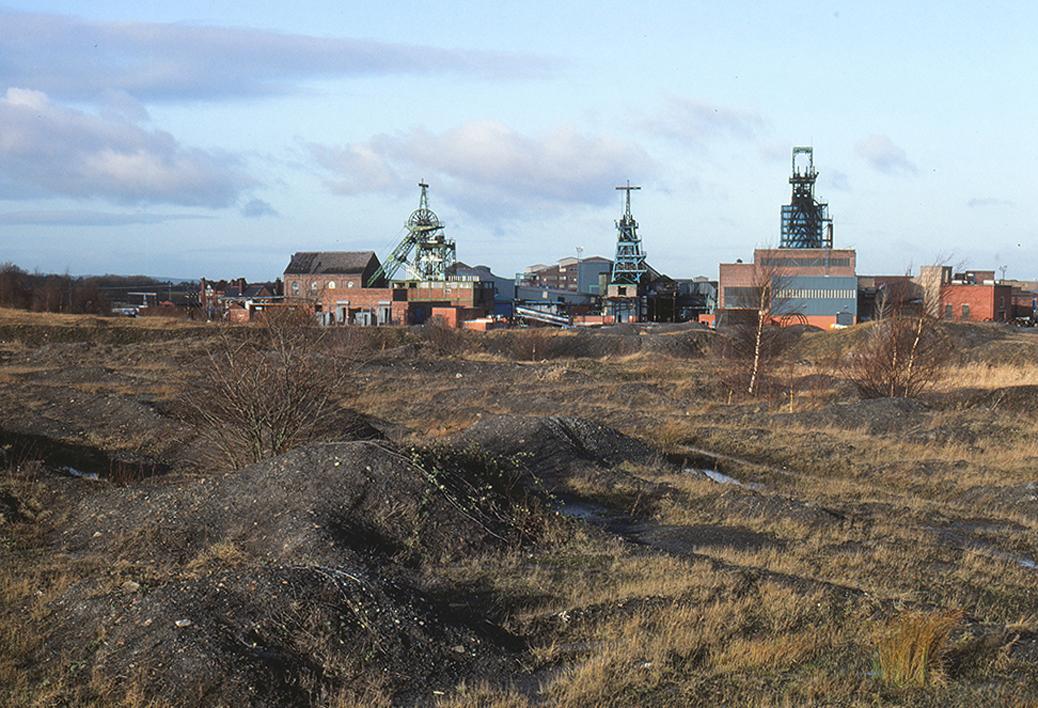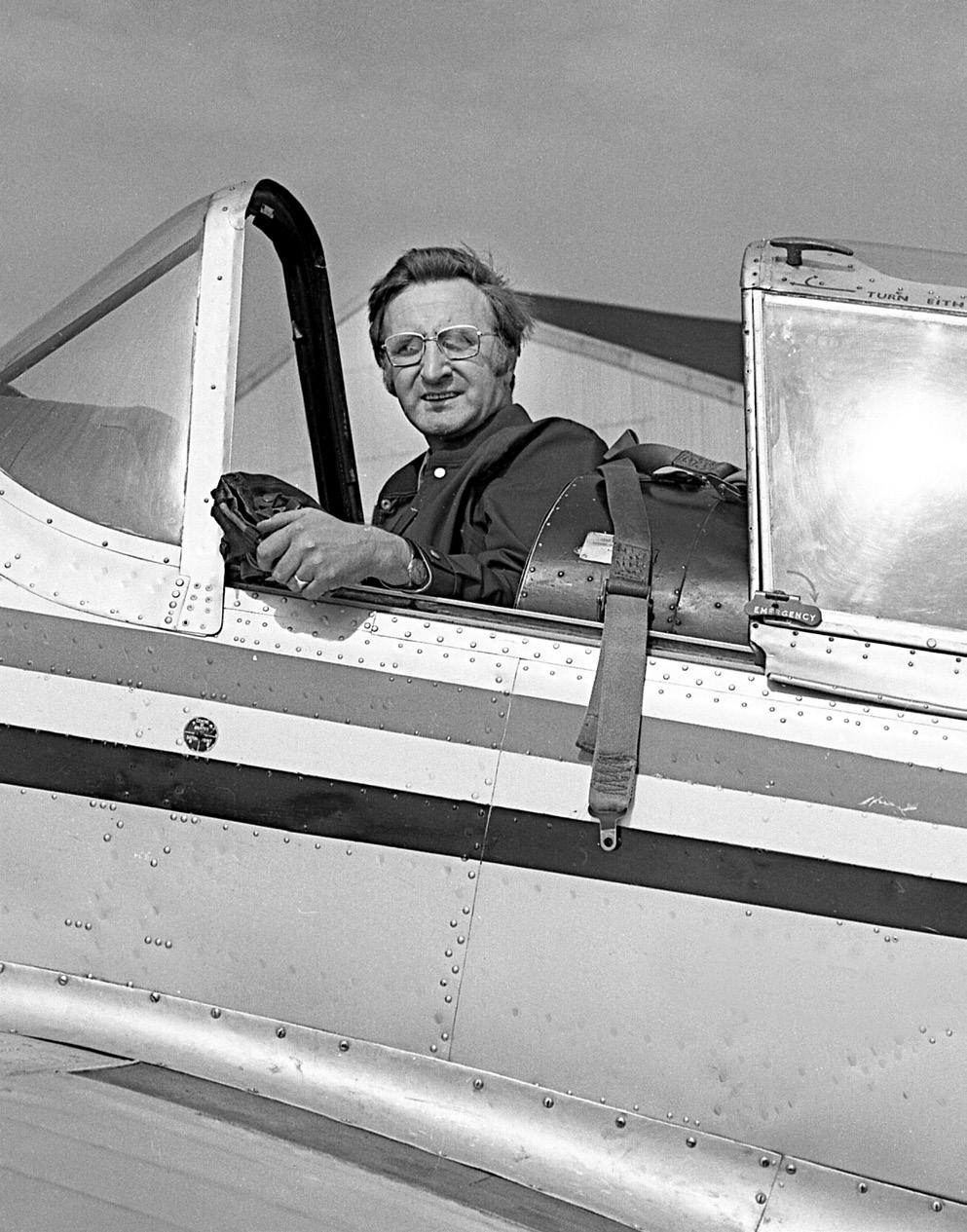
6 minute read
Aerial Adventures
AERIAL ADVENTURE
Landscape features captured with Kodak Infrared Aerial Ektachrome 8443. ERIC HOULDER LRPS
Back in those long-ago summers of the late 1960s, I was working as an archaeologist for the British Museum on Britain’s most charismatic archaeological site, Sutton Hoo. Part of my responsibility as a site supervisor was shooting colour transparencies. For this I was using my Minolta MD outfit including a Weston V meter, with Agfacolor (sic) CT18, which was acknowledged as the most accurate colour film for scientific purposes, though not perhaps the sharpest. I also had a Yashica 44, a twin lens reflex using 127 film for monochrome.
Whilst going about our daily work on site, we could not help noticing USAF F100 Super Sabres passing over on regular patrols; the pilots were intrigued by the dig below and visited us in the base chopper, a Kamen Husky, which raised clouds of dust and caused many symbolic two figure gestures! So they re-visited us in their cars, and offered to make amends by shooting some aerial pictures of the site. This they duly did, and a week later, together with the other three supervisors, I was called into the director’s hut to see the weirdest transparencies I had ever viewed. This was my first experience of Infrared Ektachrome which had only recently been de-classified by the US military. Back home in Yorkshire, in the pub following a meeting of PontArch, I mentioned these pictures to a friend, Michael Leach (who sadly died very recently). Michael possessed a pilot’s licence, and offered to provide the necessary wings. Cliff Green, our local dealer went to enormous trouble and eventually obtained two twenty exposure cassettes of the film direct from Kodak Rochester.
Swatting up the extensive leaflet, I tried everywhere to obtain the Number 12 filter. Initially I used a Wratten gelatine one, but this bulged in the 120 mph slipstream. Cliff finally discovered that Toshiba produced a glass version and got one. We soon discovered too that the dense filter obstructed the view in an SLR, so I purchased a Zorki 4 rangefinder camera. The film was processed using Kodak E4 process, but expensively as the solutions could not be re-used.
18 Kamen Husky taking the first 8443 images at Sutton Hoo. The observer’s ‘bone dome’ may clearly be seen at the window. Minolta SR1v, 55mm Rokkor, Agfa CT18.
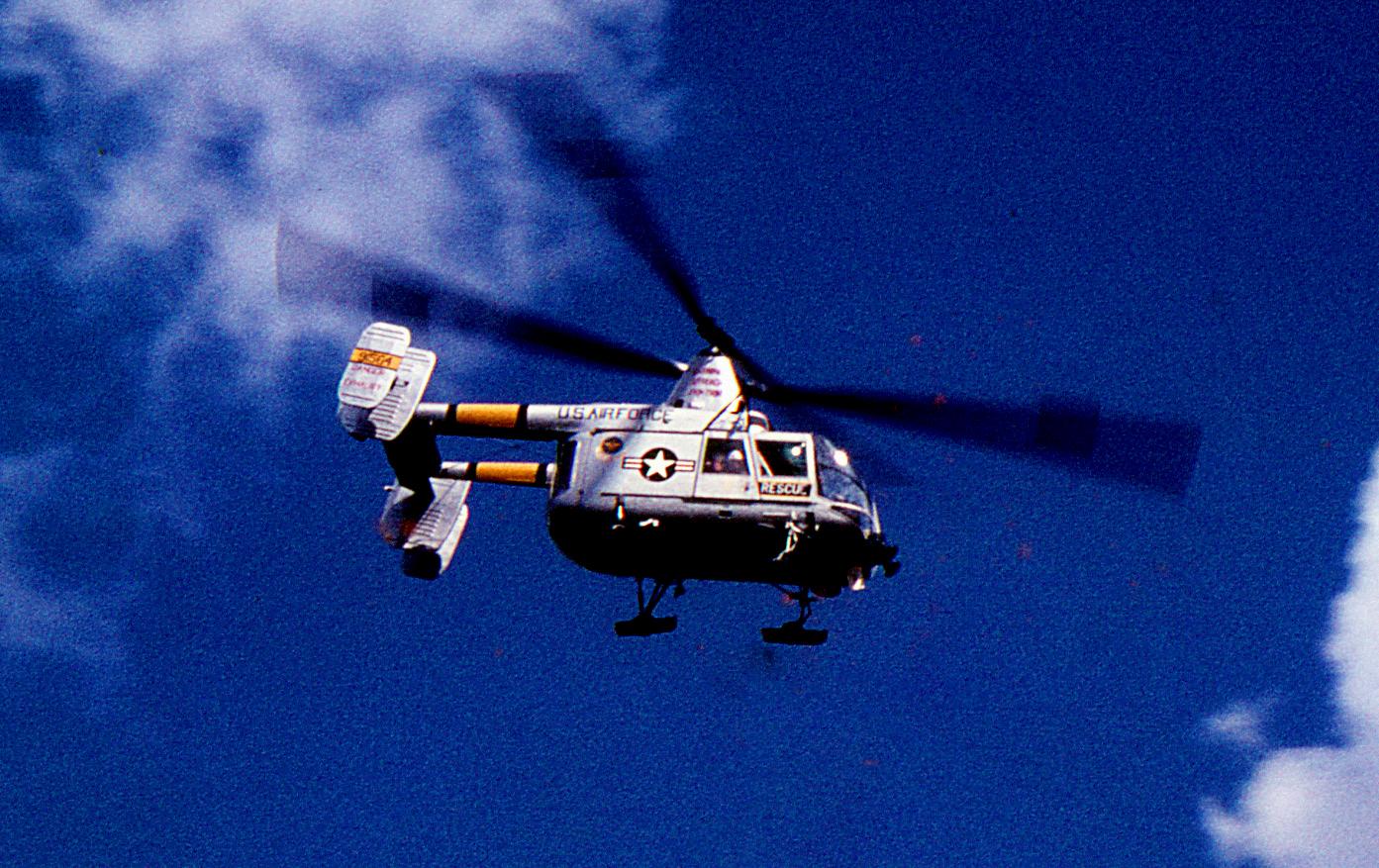
The aircrew were not photographers, they had no access to the necessary No.12 (3x yellow) filter, and the Husky, being twin rotor, contra-rotating, shook like mad. Frankly, the images were rubbish, though today some would label them DCM and pretend that they were deliberately shot. However, they demonstrated that this film could see through thin sand, soil, some crops, and shallow water.
Michael Leach in the Chipmunk which was used in our initial sorties. Yashica 44 TLR. FP3.
The recommended speed setting was 100 ASA which included the filter. This proved to be accurate, but as another camera with conventional film was required as a control, it would make metering unduly complex
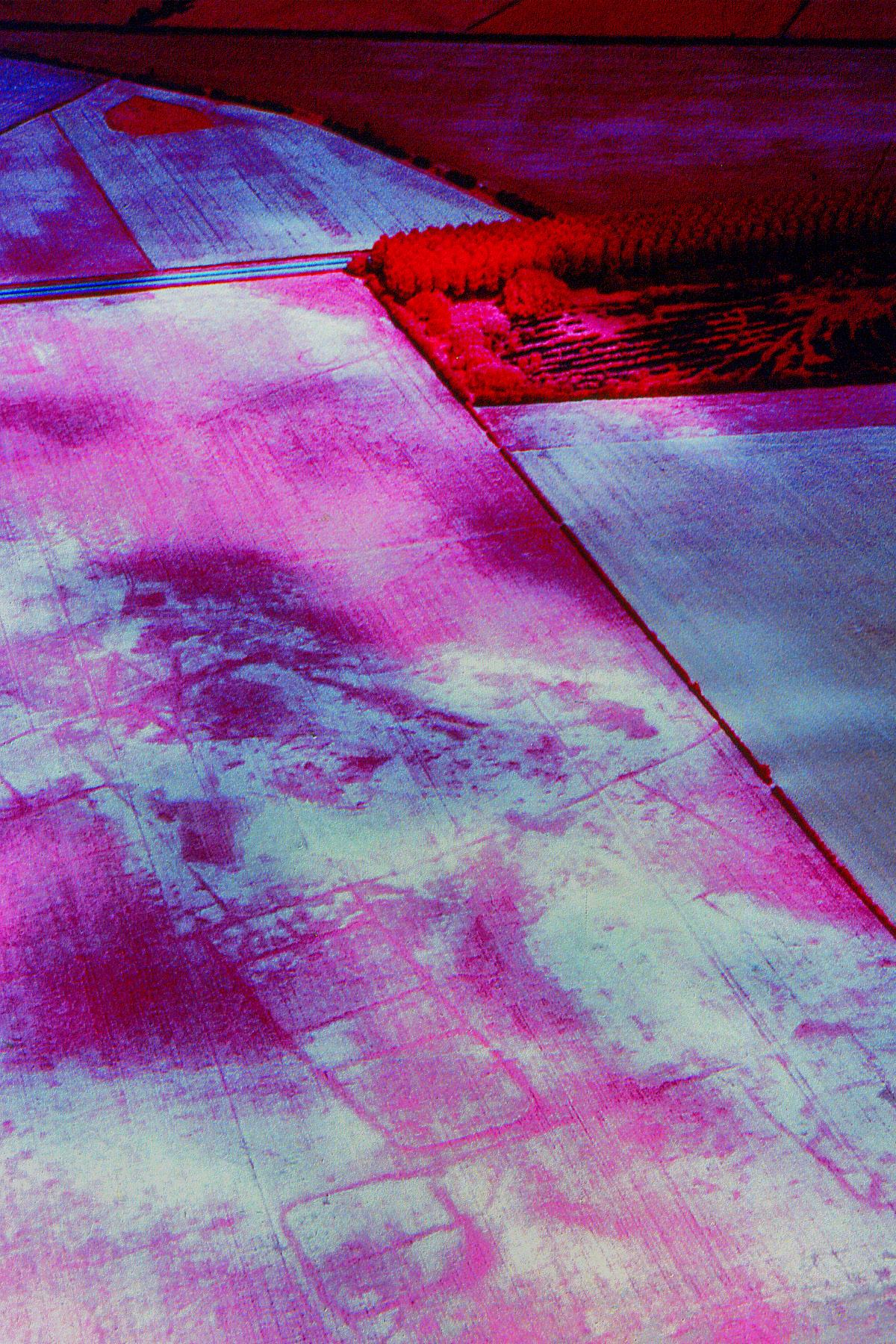
to continue using 50 ASA CT18. Luckily, Fuji had just released a new 100 ASA film, Fujichrome 100, so some of this was purchased. Later, I received a small legacy and bought a Minolta SRT101 with matchneedle metering, so that the Weston Master could be reserved exclusively for the 8443.
One of the problems of using 8443 was that we were trying to photograph traces of an ancient world that were, by definition, invisible to the human eye; so where did we point the camera? After a couple of sorties in which the camera was directed serendipitously, we decided that the best bet was to seek out places that promised results, like strategic spots along Roman roads, and sites of known interest. This quickly produced results, though ironically, the cost of colour printing then made it difficult to publish the results at the time. Today, however, it is possible to restore these old images (I use Affinity Photo), and they may be seen for the first time in their full glory. One was actually a runner up in the 2017 Historic Photographer of the Year.
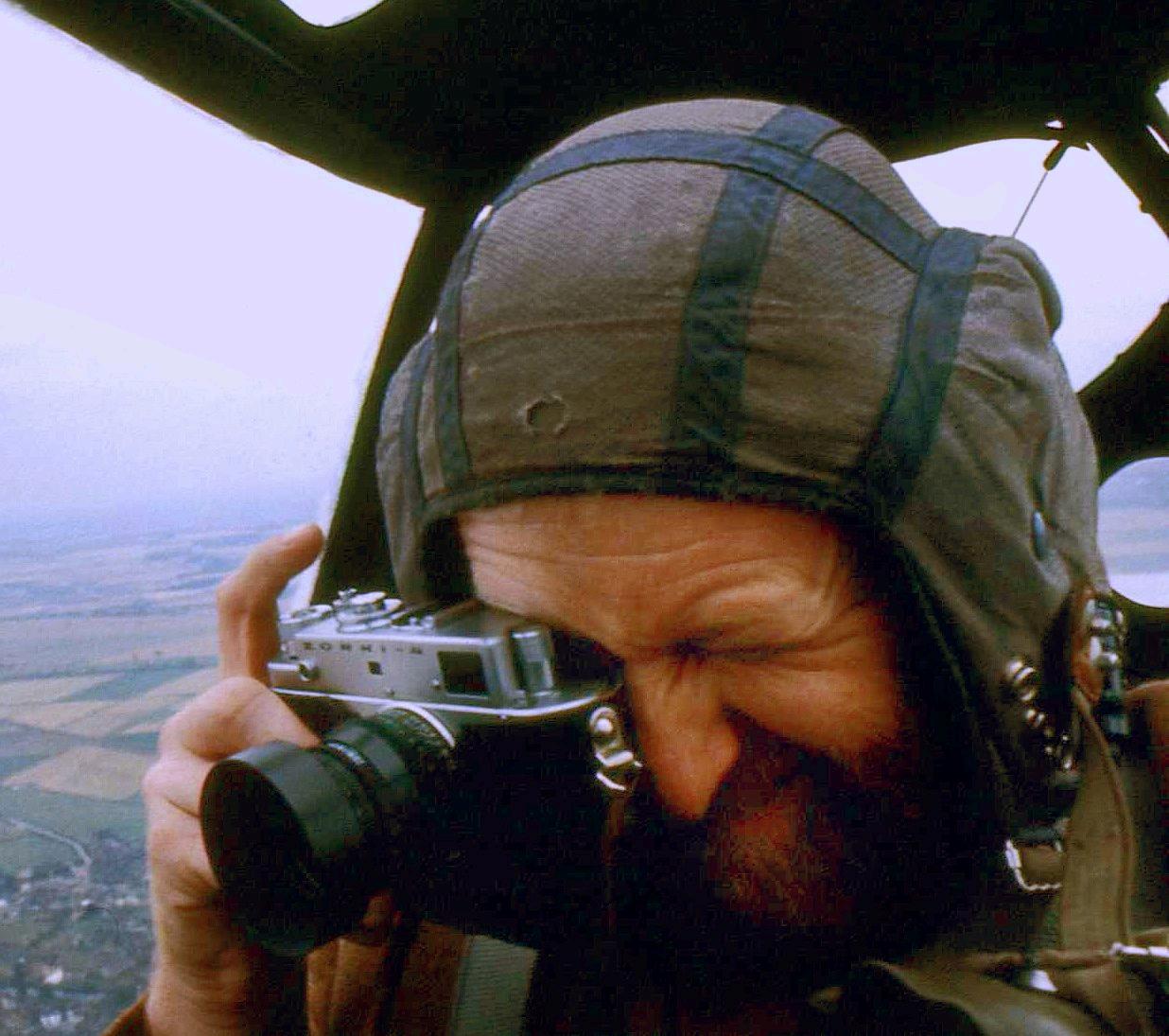
His area of operations covered the North Midlands and all Yorkshire. We flew in most conditions, using the aircrew lounge at Leeds Bradford Airport, or flying club bars, to eat our sandwiches, though on one sortie we inadvertently opened both side windows of the Cessna 150 at the same time, only to see an OS map and a pack of sandwiches momentarily wrapping themselves around the tailfin before disappearing behind us!
The results were published in the usual journals, and in Derrick’s book, though only in monochrome because of the cost.
In 1979 disaster struck in the form of Méniére’s disease, an inner ear infection. Leaning out into a vicious slipstream with a roaring engine at arm’s length in front just may have had something to do with this! I could not stand for several weeks, whilst leaning out of an aeroplane was strictly verboten. The effects lasted, so that today I still cannot fly comfortably. However, our adventures make a fascinating lecture which I deliver to both photographic and historical societies all over the country. I gave my Zorki to my son-in-law, a Leica enthusiast who had it and its lens re-conditioned. The SR1v was presented to the Sutton Hoo site Visitor Centre, whilst the SRT101 was stolen in an airport whilst on loan to a friend. My son has my Weston Master V, together with my Mamiyaflex outfit.
I still have the slides, which though faded do scan most satisfactorily with the ‘restore color ‘(sic) button engaged. I do wish the human body had a similar button. However the memories remain along with the pictures, and they return each time I project them.
20 The author in flying helmet in action. An early selfie. Minolta SR1v, 28mm Lumax, Fujichrome 100.
I attended a number of conferences on aerial photography, and on one memorable occasion actually projected for Professor JK St Joseph, the guru of the discipline. On another occasion, Sir Mortimer Wheeler on viewing one of my pictures in an exhibition arranged by the RPS Archaeology Group said that it was the best aerial photograph that he had ever seen. Happy days!
There were a number of exceptionally dry summers in the ‘70s, and we were kept busy using both 8443 and conventional emulsions. With the acquisition of the SRT101, the older SR1v became available for monochrome. At the same time, Derrick Riley (DSO & bar, DFC, with three tours with Bomber Command under his belt) one of the leading exponents of the discipline asked me to fly and photograph with him.
Cartoon of me by on of my students Simon Thorp, now Editor of VIZ. This is one of his earliest efforts at caricature.
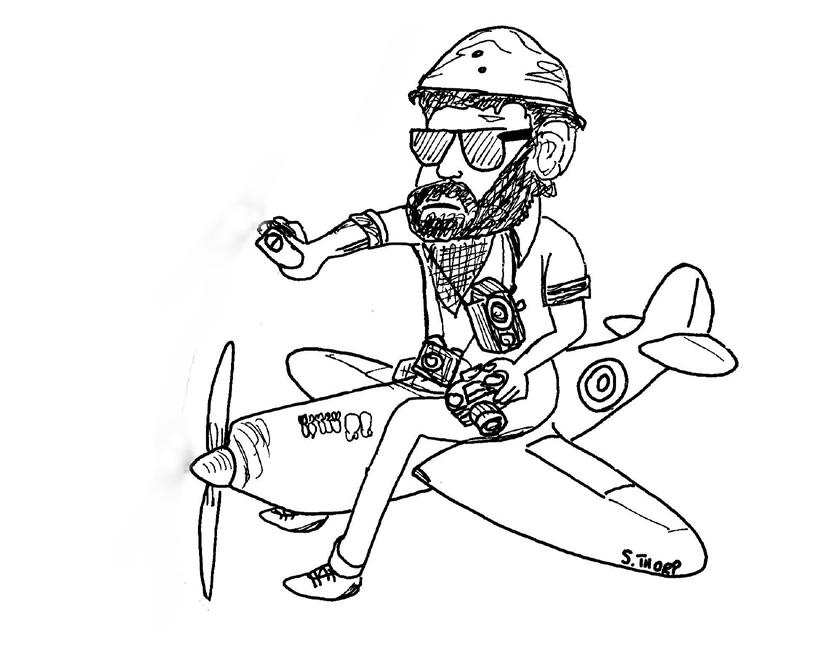
This article first appeared in ANALOGUE No 8, April 2019, the journal of the RPS Analogue Group, and is reproduced with thanks to, and by permission of the Editor, Richard Bradford ARPS.





